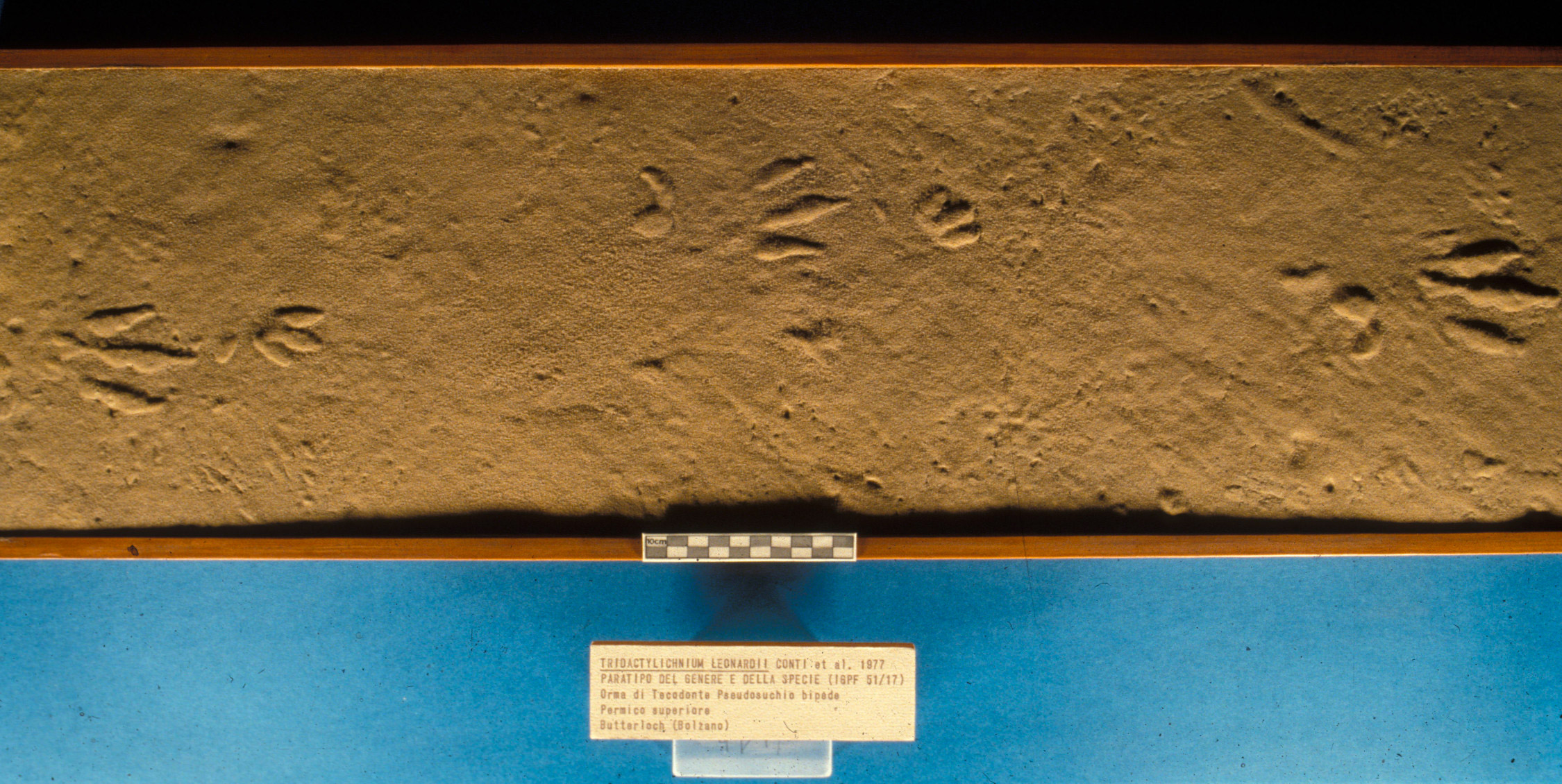2. A massive arid plain crossed by rivers and invaded by the Dolomite sea
Some 266-251 millions of years ago – the late Permian era
The Palaeozoic mountain chains gradually eroded away and volcanic activity ceased. The Dolomite region became an extensive semi-arid plain scored by rivers, while the Tethys Ocean gradually expanded, encroaching on the plain from east to west. A submergent coastline gradually formed, with lagoons often filled with large quantities of gypsum and limestone sediment created by evaporation.
Just before the end of the Permian era the climate was semi-arid and the plain between the sea and the remains of the ancient Palaeozoic mountain chain suffered from a lack of water for most of the year. Broad rivers crossed the plain distributing massive quantities of material eroded from the mountains and the now dormant Atesino volcanic complex. During this period lasting many millions of years, the region sunk and Tethys Ocean changed shape, gradually invading the Dolomite plain, from east to west. The Dolomite region was transformed from a plain criss-crossed by rivers to a coastal zone where a lagoon formed with isolated stretches of salt water, finally to be submerged in shallows. The climate of that era caused massive evaporation of this, the first Dolomite Sea, as evidenced by the thick deposits of gypsum and significant production of the carbonate rock that made possible limestone and dolomite rock deposits.
Text by Dolomiti Project
Some rocks and fossils from this era




